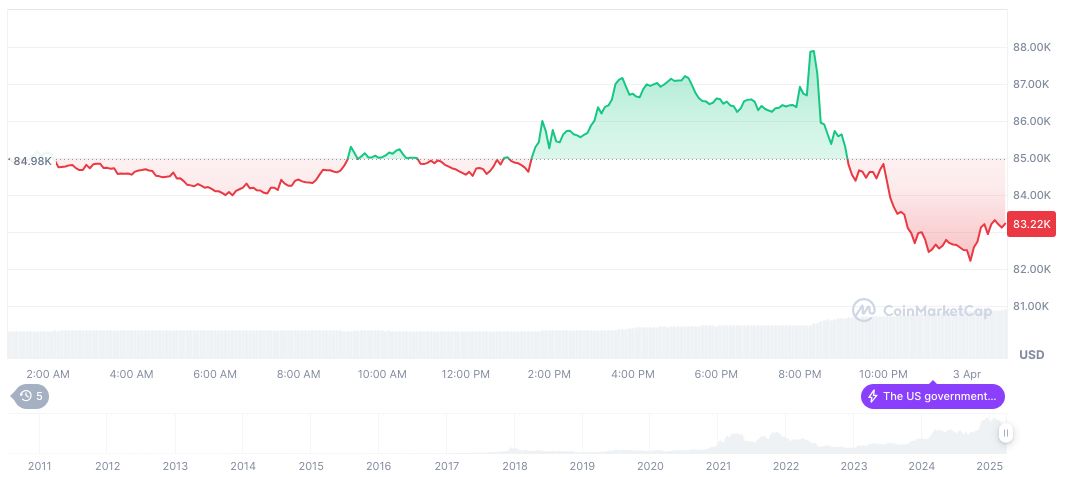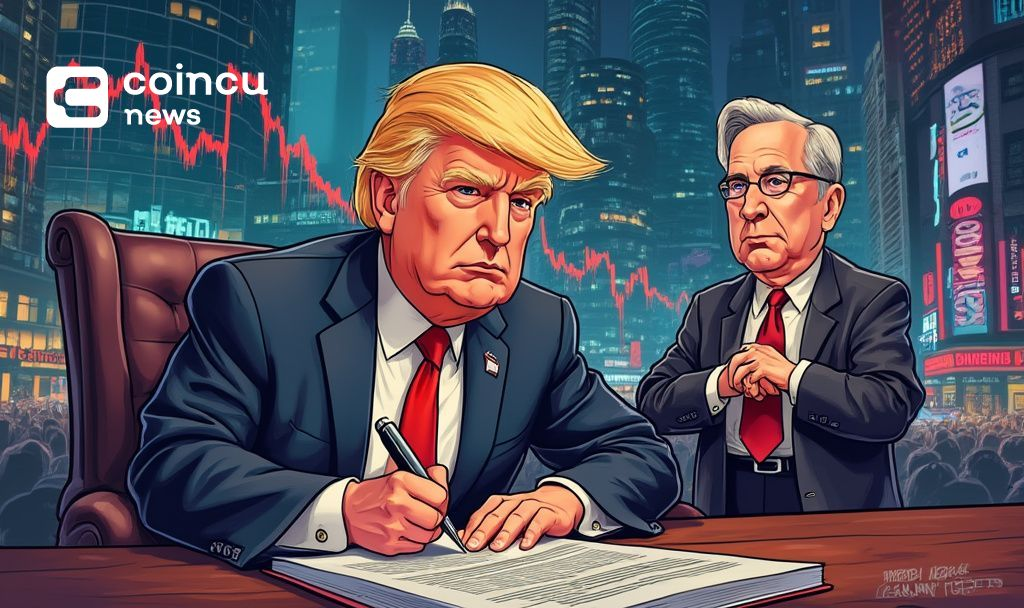 CaryptosHeadlines Media Has Launched Its Native Token CHT.
Airdrop Is Live For Everyone, Claim Instant 5000 CHT Tokens Worth Of $50 USDT.
Join the Airdrop at the official website,
CryptosHeadlinesToken.com
CaryptosHeadlines Media Has Launched Its Native Token CHT.
Airdrop Is Live For Everyone, Claim Instant 5000 CHT Tokens Worth Of $50 USDT.
Join the Airdrop at the official website,
CryptosHeadlinesToken.com
- Introduced by President Trump, a new “reciprocal tariffs” policy includes a baseline 10% tariff for all trading partners.
- U.S. GDP growth faces a potential decline amid a trade deficit surge.
- Bitcoin initially rose to $88,000, then fell below $82,500 following the tariff news.
President Donald Trump’s announcement introduces a baseline 10% tariff for all trading partners on April 3, 2025. This measure, one of the most comprehensive tariffs in decades, seeks to address trade imbalances. Bill Adams from Comerica emphasizes its potential as a significant growth drag, noting discussions in Congress about tax reduction policies to counterbalance the impacts.
The policy triggers concern as it may lead to economic growth challenges and market reactions, including volatility in the cryptocurrency sector.
Trump’s Tariffs: Major Economic Impact and Market Reactions
President Donald Trump’s announcement introduces a baseline 10% tariff for all trading partners on April 3, 2025. This measure, one of the most comprehensive tariffs in decades, seeks to address trade imbalances. Bill Adams from Comerica emphasizes its potential as a significant growth drag, noting discussions in Congress about tax reduction policies to counterbalance the impacts.
Immediate changes include a projected 2-3% GDP tax equivalent and doubled federal corporate tax burdens. Adams anticipates fiscal policy could be more growth-supportive by 2026, depending on tariff permanence and global responses. Retaliatory actions and negotiation predictions by U.S. Treasury Secretary Bennett highlight geopolitical concerns.
“The tariffs’ impact will likely equate to a tax hike of 2-3%, significantly altering fiscal dynamics as import costs rise.” — Bill Adams, Chief Economist at Comerica Bank.
The economic and market reactions were swift. U.S. stock futures saw a dramatic $2 trillion decrease in 15 minutes, reacting to inflationary pressure fears. Bitcoin initially jumped to $88,000, before dropping below $82,500, reflecting broader market sentiment. Gold, however, surged to $3,160 per ounce amid geopolitical tensions.
Historical Tariff Consequences and Bitcoin’s Volatile Reaction
Did you know? The last time the U.S. enacted such broad tariffs, during the Great Depression, they led to significant global trade declines. This historical precedent raises fears of similar impacts today.
Bitcoin holds a current price of $81,600.89, according to CoinMarketCap, with recent declines of 5.58% over 24 hours and 6.26% over seven days. The 90-day downturn of 17.06% underscores ongoing market volatility, heightened by recent macroeconomic developments.


Coincu research analysts highlight potential outcomes of these tariffs, including increased regulatory scrutiny in macroeconomic shifts, potentially straining U.S. trade relations further. They suggest monitoring the potential shift in fiscal policy which could influence economic trajectories significantly.












